license: wtfpl
tags:
- guide
- stable diffusion
- webui
- automatic1111
- stable-diffusion-webui
language:
- en
CLICK HERE TO OPEN THIS DOCUMENT IN FULL WIDTH
Index
- Introduction
- Google Collab
- Local Installation (Windows + Nvidia)
- Getting Started
- Extensions
- Loras
- Upscalers
- ControlNet
- Lora Training
Introduction ▲
Stable Diffusion is a very powerful AI image generation software you can run on your own home computer. It uses "models", which function like the brain of the AI, and can make almost anything, given that someone has trained it to do it. The biggest uses are anime art, photorealism, and NSFW content.
The images you create may be used for any purpose, depending on the used model's license. Whether they are "yours" in a legal sense varies by local laws and is often inconclusive. Neither I or any of the people involved in Stable Diffusion or its models are responsible for anything you make, and you are expressively forbidden from creating illegal or harmful content.
This guide is up to date with the best practices as of March 2023. One week is like a year in AI time, so this guide may be outdated by the time you read it. Hopefully it is still useful.
Google Collab ▲
The easiest way to use Stable Diffusion is through Google Collab. It borrows Google's computers to use AI, with variable time limitations, usually a few hours every day. You will need a Google account (or several, wink wink) and we will be using Google Drive for ease of access.
If you instead want to run it on your own computer, scroll down ▼.
Open this page.
Near the top, click Copy to Drive. Wait for the new window to open and close the old one. This is now your personalized collab which will save your settings, and you should open it from your Google Drive from now on. Check the original for updates as frequently as you like.
Turn on the following options under Configurations:
output_to_drive, configs_in_drive, no_custom_theme. Then, turn on the following options under Models, etc:anything_vae,wd_vae,sd_vae.If you're already familiar with Stable Diffusion, you may paste links to your desired resources in the
custom_urlstext box. We will add some links later in this guide. Links must be direct downloads to each file (ideally from civitai or huggingface), and must be separated by commas.You can save the file now if you want, and whenever you change something in this page later.
Press the play button to the left, anywhere in the first section of the page labeled Start 🚀. Wait a few minutes for it to finish, while a few progress messages appear near the bottom. Then, a public link will be created, which you can open in a new tab to start using Stable Diffusion. Keep the collab tab open! (It may be difficult to keep both tabs open on mobile)
You can now make some decent anime images thanks to the default Anything 4.5 model. But we can go further. Also, what are all of these options? Scroll down ▼ to get started.
Local Installation (Windows + Nvidia) ▲
To run Stable Diffusion on your own computer you'll need at least 16 GB of RAM and 4 GB of VRAM (preferably 8). I will only cover the case where you are running Windows 10/11 and using an NVIDIA graphics card series 16XX, 20XX or 30XX (though 10XX also work). My apologies to AMD, Linux, and Mac users, but their cases are harder to cover. If you don't meet the hardware requirements, you can just proceed with the Google Collab method above.
Get the latest release from this page.
Run the installer, choose a simple location to install to, and wait for it to finish.
Run the program. You will see a few options. First, turn on medvram and xformers. You may skip medvram if you have 12 or more GB of VRAM.
Set your Additional Launch Options to:
--opt-channelslast --no-half-vae. Any extra options should be separated by spaces.- If your graphics card has less than 8 GB of VRAM, add
--opt-split-attention-v1as it may lower vram usage even further. - If you want to run the program from your computer but want to use it in another device, such as your phone, add
--listen. After launching, use your computer's local IP in the same WiFi network to access the interface. - Full list of possible parameters here
- If your graphics card has less than 8 GB of VRAM, add
Click Launch and wait for a browser window to open with the interface. It may take a while the first time.
The page is now open. It's your own private website. The starting page is where you can make your images. But first, we'll go to the Settings tab. There will be sections of settings on the left.
- In the Stable Diffusion section, scroll down and increase Clip Skip from 1 to 2. This is said to produce better images, specially for anime.
- In the User Interface section, scroll down to Quicksettings list and change it to
sd_model_checkpoint, sd_vae - Scroll back up, click the big orange Apply settings button, then Reload UI next to it.
You are more than ready to generate some images, but you only have the basic model available. It's not great, at most it can make some paintings. Also, what are all of these options? See below ▼ to get started.
Getting Started ▲
Before or after generating your first few images, you will want to take a look at the information below to improve your experience and results.
The top of your page should look similar to this:

Here you can select your model and VAE. We will go over what these are and how you can get more of them. The collab has additional settings here too, you should ignore them for now.
Models ▲
The model, also called checkpoint, is the brain of your AI, designed for the purpose of producing certain types of images. There are many options, most of which are on civitai. But which to choose? These are my recommendations:
- For anime, 7th Heaven Mix has a nice aesthetic similar to anime movies, while Abyss Orange Mix 3 (Note: scroll down and choose the AOM3 option) offers more realism in the form of advanced lighting and softer shading, as well as more lewdness. I remixed the two options above into Heaven Orange Mix.
- While AOM3 is extremely capable for NSFW, the popular Grapefruit hentai model may also fit your needs.
- For general art go with DreamShaper, there are few options quite like it in terms of raw creativity. An honorable mention goes to Pastel Mix, which has a beautiful and unique aesthetic with the addition of anime.
- For photorealism go with Deliberate. It can do almost anything, but specially photographs. Very intricate results.
- The Uber Realistic Porn Merge is self-explanatory.
Launcher: It will let you choose the path to your models folder. Otherwise the models normally go into
stable-diffusion-webui/models/Stable-diffusion.Collab: Copy the direct download link to the file and paste it in the text box labeled
custom_urls. Multiple links are separated by commas.Please note that checkpoints in the format
.safetensorsare safe to use while.ckptmay contain viruses, so be careful. Additionally, when choosing models you may have a choice between fp32, fp16 and pruned. They all produce the same images within a tiny margin of error, so just go with the smallest file (fp16-pruned). If you want to use them for training or merging, go with the biggest one instead.VAEs ▲
Most models don't come with a VAE built in. The VAE is a small separate model, which "converts your image from AI format into human format". Without it, you'll get faded colors and ugly eyes, among other things.
If you're using the collab in this guide, you should already have the below VAEs, as I told you to select them before running.
There are practically only 3 different VAEs out there worth talking about:
- anything vae, also known as the orangemix vae. All anime models use this.
- vae-ft-mse, the latest from Stable Diffusion itself. Used by photorealism models and such.
- kl-f8-anime2, also known as the Waifu Diffusion VAE, it is older and produces more saturated results. Used by Pastel Mix.
Launcher: It lets you choose the default VAE, otherwise put them in the
stable-diffusion-webui/models/VAEfolder.Prompts ▲
On the first tab, txt2img, you'll be making most of your images. This is where you'll find your prompt and negative prompt.
Stable Diffusion is not like Midjourney or other popular image generation software, you can't just ask it what you want and get a good image. You have to be specific. Very specific.
I will show you an example of a prompt and negative prompt:Anime
2d, masterpiece, best quality, anime, highly detailed face, highly detailed eyes, highly detailed background, perfect lightingEasyNegative, worst quality, low quality, 3d, realistic, photorealistic, (loli, child, teen, baby face), zombie, animal, multiple views, text, watermark, signature, artist name, artist logo, censored
Photorealism
best quality, 4k, 8k, ultra highres, (realistic, photorealistic, RAW photo:1.4), (hdr, sharp focus:1.2), intricate texture, skin imperfectionsEasyNegative, worst quality, low quality, normal quality, child, painting, drawing, sketch, cartoon, anime, render, 3d, blurry, deformed, disfigured, morbid, mutated, bad anatomy, bad art
EasyNegative: The negative prompts above use EasyNegative, which is a textual inversion embedding or "magic word" that codifies many bad things to make your images better. Typically one would write a very long, very specific, very redundant, and sometimes silly negative prompt. EasyNegative is as of March 2023 the best choice if you want to avoid that.
- Get EasyNegative here. For collab, paste the link into the
custom_urlstext box. For Windows, put it in yourstable-diffusion-webui/embeddingsfolder. Then, go to the bottom of your WebUI page and click Reload UI. It will now work when you type the word.
- Get EasyNegative here. For collab, paste the link into the
After a "base prompt" like the above, you may then start typing what you want. For example
young woman in a bikini in the beach, full body shot. Feel free to add other terms you don't like to your negatives such asold, ugly, futanari, furry, etc.
You can also save your prompts to reuse later with the buttons below Generate. Click the small 💾 Save style button and give it a name. Later, you can open your Styles dropdown to choose, then click 📋 Apply selected styles to the current prompt.Note that when you surround something in
(parentheses), it will have more emphasis or weight in your resulting image, equal to1.1. The normal weight is 1, and each parentheses will multiply by an additional 1.1. You can also specify the weight yourself, like this:(full body:1.4). You can also go below 1 to de-emphasize a word:[brackets]will multiply by 0.9, but you must still use normal parentheses to go lower, like(this:0.5).Also note that hands and feet are famously difficult for AI to generate. These methods improve your chances, but you may need to do img2img inpainting, photoshopping, or advanced techniques with ControlNet ▼ to get it right.
Generation parameters ▲
The rest of the parameters in the starting page will look something like this:

- Sampling method: These dictate how your image is formulated, and each produce different results. The default of
Euler ais almost always the best. There are also very good results forDPM++ 2M KarrasandDPM++ SDE Karras. - Sampling steps: These are "calculated" beforehand, and so more steps doesn't always mean more detail. I always go with 30, you may go from 20-50 and find good results.
- Width and Height: 512x512 is the default, and you should almost never go above 768 in either direction as it may distort and deform your image. To produce bigger images see
Hires. fix - Batch Count and Batch Size: Batch size is how many images your graphics card will generate at the same time, which is limited by its VRAM. Batch count is how many repetitions of those to produce. Batches have sequential seeds, more on seeds below.
- CFG Scale: "Lower values produce more creative results". You should almost always stick to 7, but 4 to 10 is an acceptable range. It may get strange outside that.
- Seed: A number that guides the creation of your image. The same seed with the same prompt and parameters produces almost exacly the same image every time.
Hires. fix: Lets you create larger images without distortion. Often used at 2x scale. When selected, more options appear:
- Upscaler: The algorithm to upscale with.
Latentand its variations produce creative results, and you may also likeR-ESRGAN 4x+and its anime version. I recommend the Remacri upscaler, see Upscalers ▼. - Hires steps: I recommend at least half as many as your sampling steps. Higher values aren't always better, and they take a long time, so be conservative here.
- Denoising strength: The most important parameter. Near 0.0, no detail will be added to the image. Near 1.0, the image will be changed completely. I recommend something between 0.2 and 0.6 depending on the image, to add enough detail as the image gets larger, without destroying any original details you like.
Others:
- Restore faces: May improve realistic faces. I never need it with the models and prompts listed in this guide as well as hires fix.
- Tiling: Used to produce repeating textures to put on a grid. Not very useful.
- Script: Lets you access useful features and extensions, such as
X/Y/Z Plotwhich lets you compare images with varying parameters on a grid. Very powerful.
- Sampling method: These dictate how your image is formulated, and each produce different results. The default of
Extensions ▲
Stable Diffusion WebUI supports extensions to add additional functionality and quality of life. These can be added by going into the Extensions tab, then Install from URL, and pasting the links found here or elsewhere. Then, click Install and wait for it to finish. Then, go to Installed and click Apply and restart UI.
Here are some useful extensions. Most of these come installed in the collab, and I hugely recommend you manually add the first 2 if you're running locally:
- Image Browser (fixed fork) - This will let you browse your past generated images very efficiently, as well as directly sending their prompts and parameters back to txt2img, img2img, etc.
- TagComplete - Absolutely essential for anime art. It will show you the matching booru tags as you type. Anime models work via booru tags, and rarely work at all if you go outside them, so knowing them is godmode. Not all tags will work well in all models though, specially if they're rare.
- ControlNet - A huge extension deserving of its own guide ▼. It lets you take AI data from any image and use it as an input for your image. Practically speaking, it can create any pose or environment you want. Very powerful if used with external tools succh as Blender.
- Ultimate Upscale - A semi-advanced script usable from the img2img section to make really large images, where normally you can only go as high as your VRAM allows.
- Two-shot - Normally you can't create more than one distinct character in the same image without them blending together. This extension lets you divide the image into parts; full, left side, right side; allowing you to make nice 2-character images. It is an optional launch setting in the collab.
- Dynamic Prompts - A script to let you generate randomly chosen elements in your image, among other things.
- Model Converter - Lets you convert most 7GB/4GB models down to 2GB, by choosing
safetensors,fp16, andno-ema. These pruned models work "almost the same" as the full models, which is to say, there is no appreciable difference due to math reasons. Most models come in 2 GB form nowadays regardless.
Loras ▲
LoRA or Low-Rank Adaptation is a form of Extra Network and the latest technology that lets you append a smaller model to any of your full models. They are similar to embeddings, one of which you might've seen earlier ▲, but Loras are larger and often more capable. Technical details omitted.
Loras can represent a character, an artstyle, poses, clothes, or even a human face (though I do not endorse this). Checkpoints are usually capable enough for general work, but when it comes to specific details with little existing examples, they fall short. That's where Loras come in. They can be downloaded from civitai or elsewhere (NSFW) and are 144 MB by default, but they can go as low as 1 MB. Bigger Loras are not always better. They come in .safetensors format, same as most checkpoints.
Place your lora files in the stable-diffusion-webui/models/Lora folder, or paste the direct download link into the custom_urls text box in collab. Then, look for the 🎴 Show extra networks button below the big orange Generate button. It will open a new section. Click on the Lora tab and press the Refresh button, and your loras should appear. When you click a Lora in that menu it will get added to your prompt, looking like this: <lora:filename:1>. The start is always the same. The filename will be the exact filename in your system without the .safetensors extension. Finally, the number is the weight, like we saw in Prompts ▲. Most Loras work between 0.5 and 1 weight, and too high values might "fry" your image, specially if using multiple Loras at the same time.

An example of a Lora is Thicker Lines Anime Style, which is perfect if you want your images to look more like traditional anime.
Upscaling ▲
You can download additional upscalers and put them in your stable-diffusion-webui/models/ESRGAN folder, or paste the direct download link into the custom_urls text box in collab. They will then be available in Hires fix, SD Upscale, Ultimate SD Upscaler, and Extras.
The collab comes with a few of them, including Remacri, which is one of the best for all sorts of images.
- A few notable ones can be downloaded here.
- Above are also the 2 files you must put into
stable-diffusion-webui/models/LDSRif you want to use the advanced yet slow LDSR upscaler. - Upscale wiki with dozens of historical choices.
Coming soon: How to use ultimate upscaler.
ControlNet ▲
ControlNet is an extremely powerful recent technology for Stable Diffusion. It lets you analyze information about any previously existing image and use it to guide the generation of your AI images. We'll see what this means in a moment.
If you're on collab, you should enable the all_control_models option. On Windows, you should first install the ControlNet extension ▲, then go here to download some models which you'll need to place in stable-diffusion-webui/extensions/sd-webui-controlnet/models. I recommend at least the Canny, Depth and Openpose models, which I will show here.
I will demonstrate how ControlNet may be used. For this I chose a popular image online as our "sample image". It's not necessary for you to follow along, but you can download the images and put them in the PNG Info tab to view their generation data.
First, you must scroll down in the txt2img page and click on ControlNet to open the menu. Then, click Enable, and pick a matching preprocessor and model. To start with, I chose Canny for both. Finally I upload my sample image. Make sure not to click over the uploaded image or it will start drawing. We can ignore the other settings.

Canny
The Canny method extracts the hard edges of the sample image. It is useful for many different types of images, specially where you want to preserve small details and the general look of an image. Observe:
Canny example, click to open
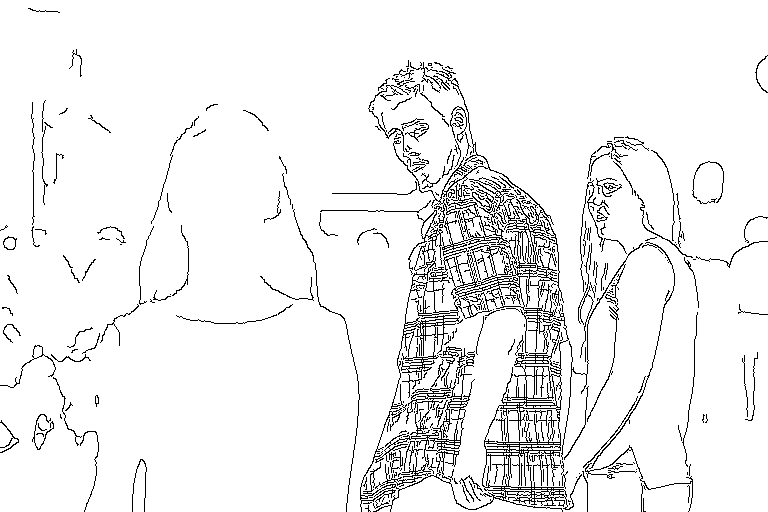
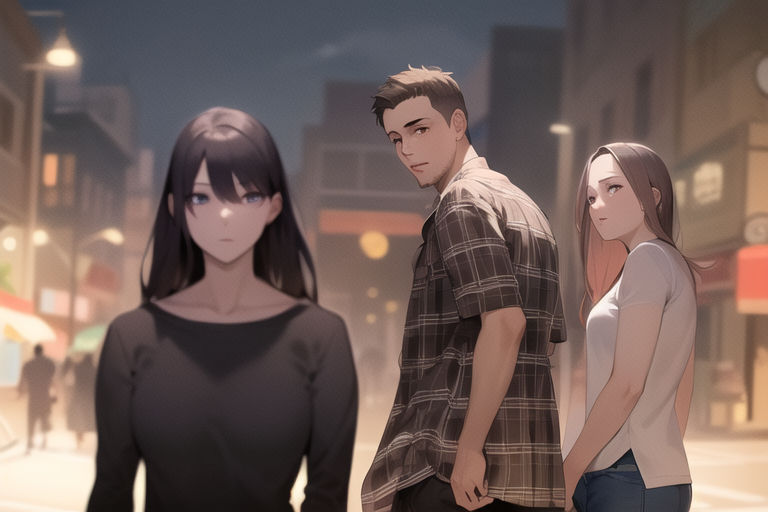
Depth
The Depth method extracts the 3D elements of the sample image. It is best suited for complex environments and general composition. Observe:
Depth example, click to open
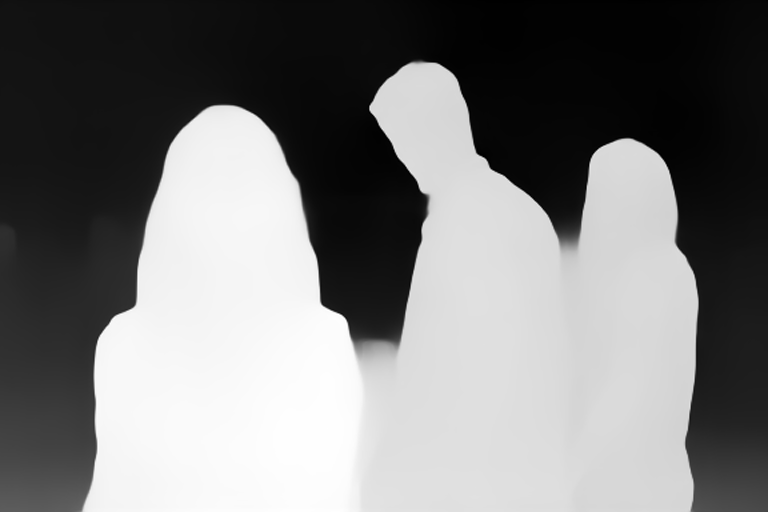
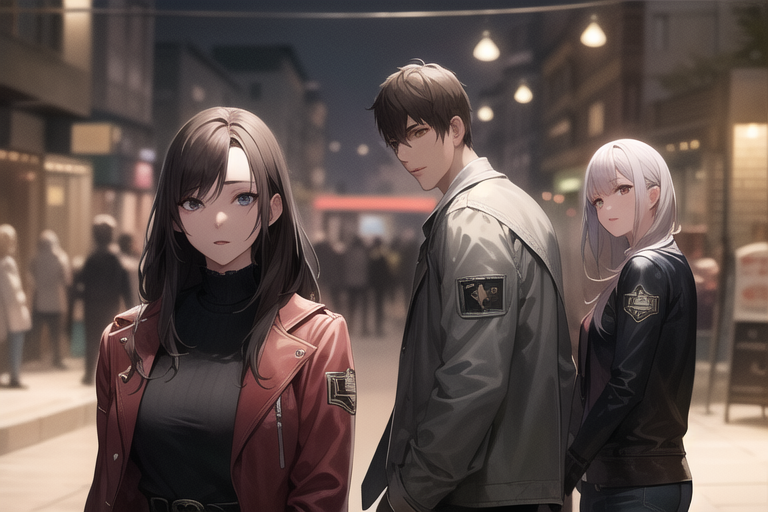
Openpose
The Openpose method extracts the human poses of the sample image. It helps tremendously to get the desired shot and composition of your generated characters. Observe:
Openpose example, click to open
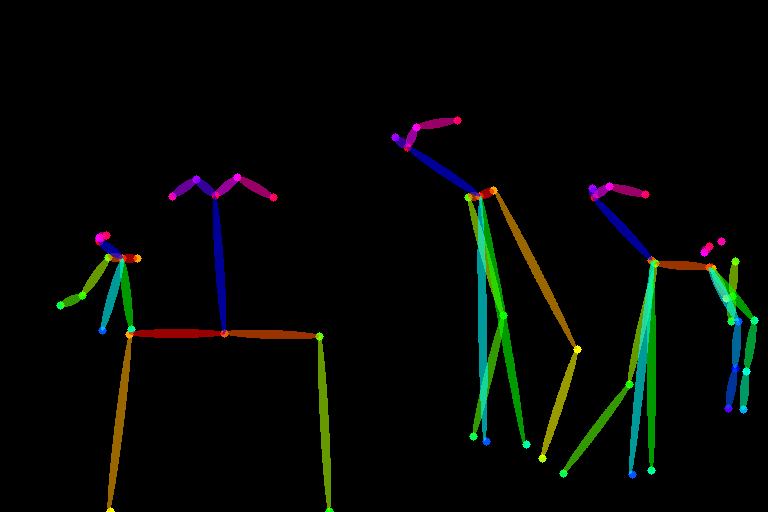

You will notice that there are 2 results for each method. The first is an intermediate step called the preprocessed image, which is then used to produce the final image. You can supply the preprocessed image yourself, in which case you should set the preprocessor to None. This is extremely powerful with external tools such as Blender.
In the Settings tab there is a ControlNet section where you can enable multiple controlnets at once. One particularly good example is depth+openpose, to get a specific character pose in a specific environment, or even a specific pose with specific hand gestures.
You can also use ControlNet in img2img, in which the input image and sample image both will have a certain effect on the result. I do not have much experience with this method.
I would also recommend the Scribble model, which lets you draw a crude sketch and turn it into a finished piece with the help of your prompt.
There are also alternative diff versions of each ControlNet model, which produce slightly different results. You can try them if you want, but I personally haven't.
Lora Training ▲
- Tips for training character Loras ▲
Coming soon.
